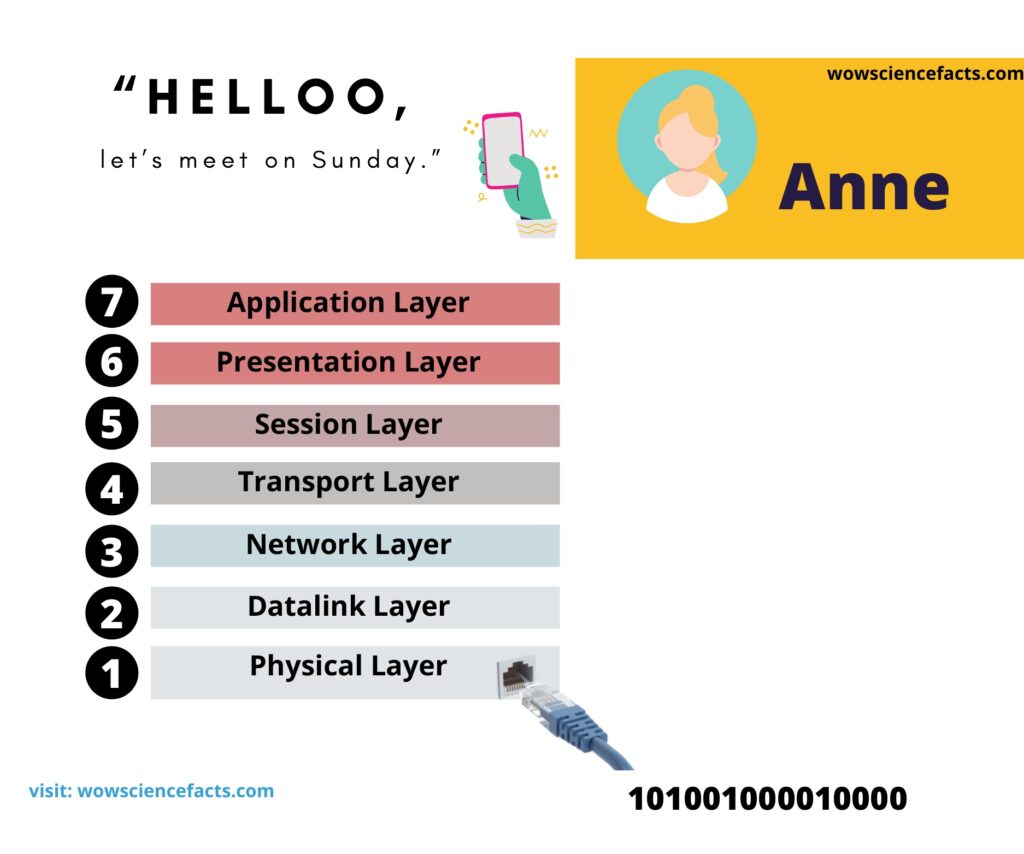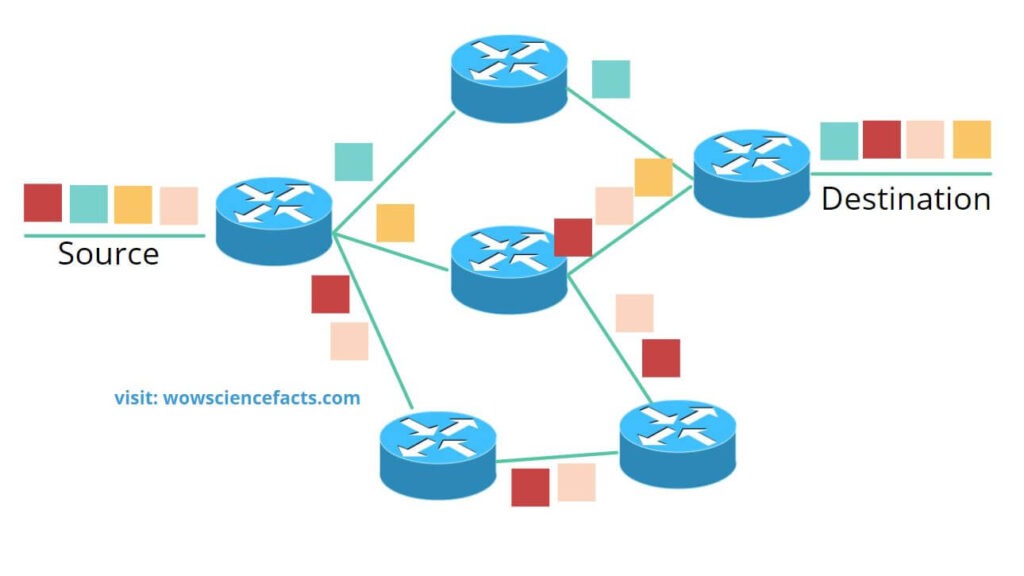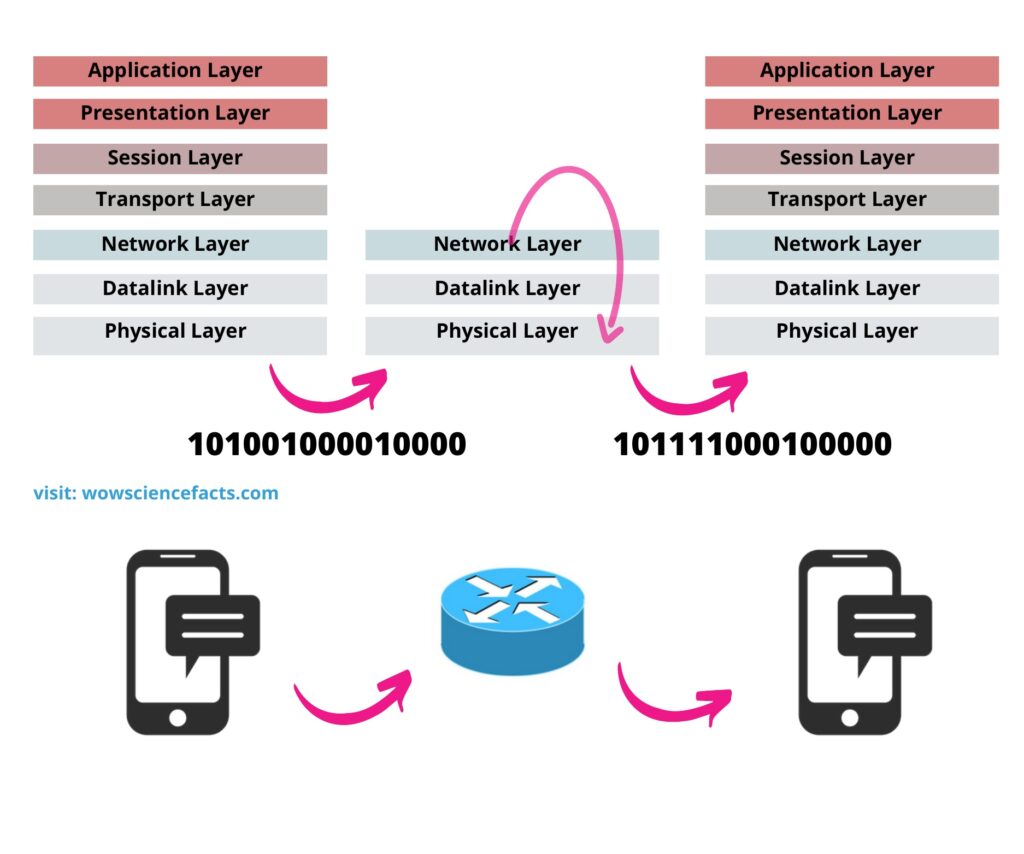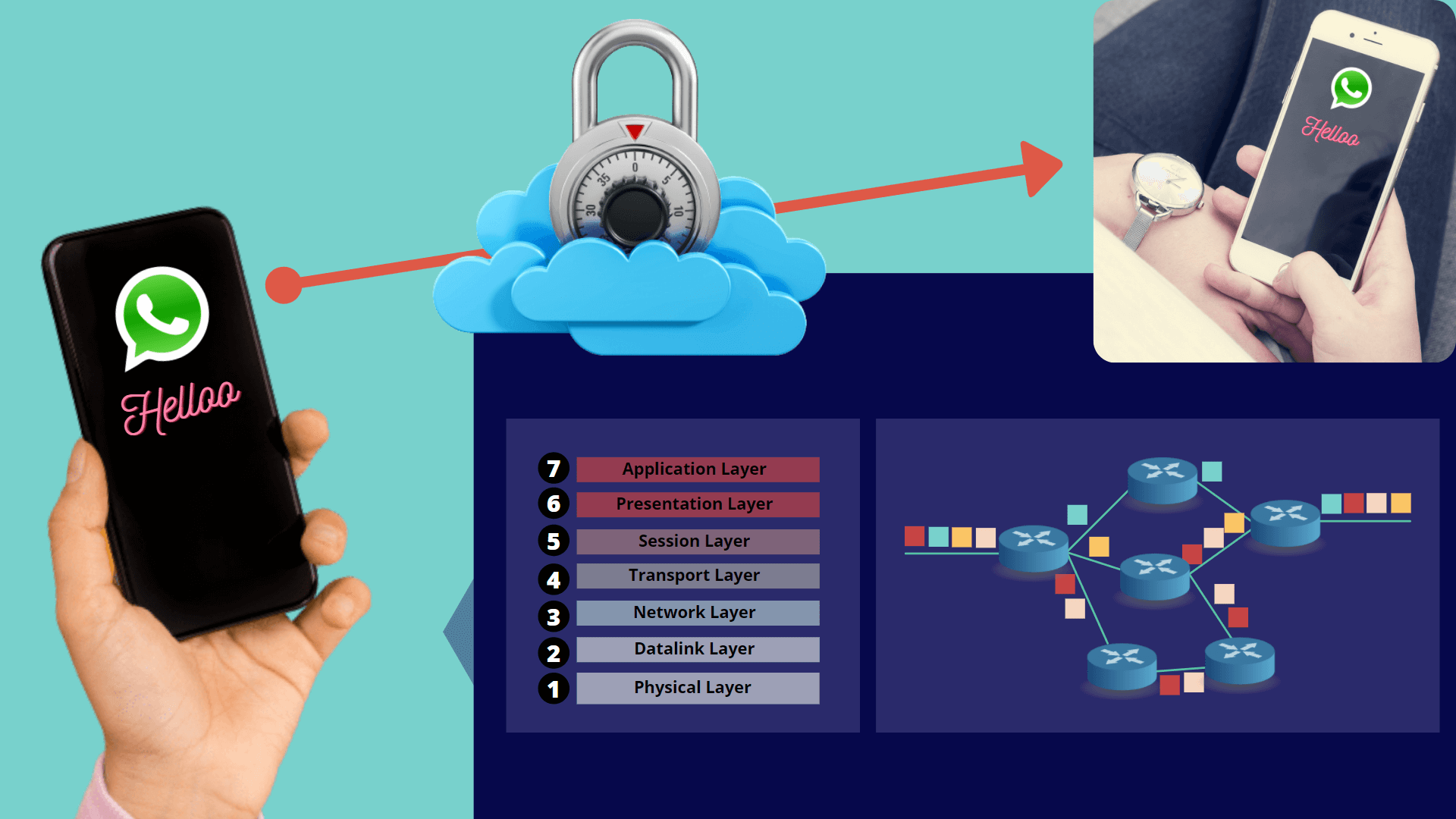“Have you ever wondered how your messages are delivered to a particular person: that you specify” – Let me explain in simple terms adding some technical flavor.
Anne and Marie are friends living in two neighborhoods. Anne needs to meet Marie. So she sends a message to Marie,
Anne: “Helloo, let’s meet on Sunday.”
Earlier:
Two three decades ago, you know message (not referring to electronic messages here) sending was not that fast as now. Back then widely used medium of transmission of a message to someone is through central post system. In that case, a message is encapsulated into an envelope mark the source and the receiver’s mail addresses on it. Then through the post-delivery system, it reaches the destination address and the receiver removes the envelope and takes out the letter and reads the message there. Here note that, in the envelope, the source is stated for the purpose to return the letter in case destination is not met or Anne is not available. This mail delivery old school idea is illustrated in the figure below,
“Why did I mention this old story?”- Please bear with me, you will know at the end of this article.

Now, suppose Anne is sending an instant message (IM) to Marie. How does this work technically? Well, first in any IM app (WhatsApp, Facebook, etc.) Anne type her message which should be delivered to her friend Marie. What happens just after pressing send button in the app is a bit technical and I will explain in very basic terms.
Layered architecture and message delivery system:
An electronic mail delivery system is technically explained in layered structure (link) where each task is dedicated to a virtual layer formed technically.

First, the app Anne uses to generate the message or type it is the closest to the user. The message she entered in the text does not comply with the electronic medium that uses to transfer the message. This medium works in binary digits (‘1’s and ‘0’s – which is represented by on and off states electrically). Thus, the message should be translated to a binary stream (how transformed? – link). Each layer behaves with a predefined standard set of rules called protocols. In each layer adds its layer-specific paddings according to protocol.
What is a protocol in networking?
Protocol is basically a set of rules which defines how devices in the network should communicate. We actually use protocols in our everyday life. Say “hello” to someone and they will generally say “hello” back. In a telephone conversation rules are respected and will start with some greetings; call will be closed with a “goodbye”. Those are good examples of the rules/protocols that we use in day to day life.(wanna go deep into protocols explained in normal terms? – follow the link).
In layer 3, Anne’s message is put into several packets (IP-data packets). Then, the bit streams generated are ready to leave Anne’s house. Then, following protocols layer 3 (L-3) to layer 5 (L-5) in TCP/IP architecture, packets reach destination Marie’s place. Interestingly, different packets can route through different paths. This is shown in the following schematic diagram.

Those blue icons are routers (routers perform operations up to L-3). Thus, we call routers “packet forwarding devices”. Routers forward receiving packets according to a table of rules called “routing table” which each router maintains, depending on the destination address of received packets. (link)

In the above figure shows one routing action between source and destination. If more hops included as in figure3, more middle upto L3 and back to L-1 loops happen in between source and destination. Practically there are several this king of hops happen in between source and destination in the world wide web (www).
“I tried to simplify not go so deep into technical stuff but to provide much inside understanding in the process of forwarding a message to a destination through this Anne and Marie scenario. Did you ever thought sending a message is completing this much of a process to reach its destination? Leave your comments below. Please state how well I have explained you.“
